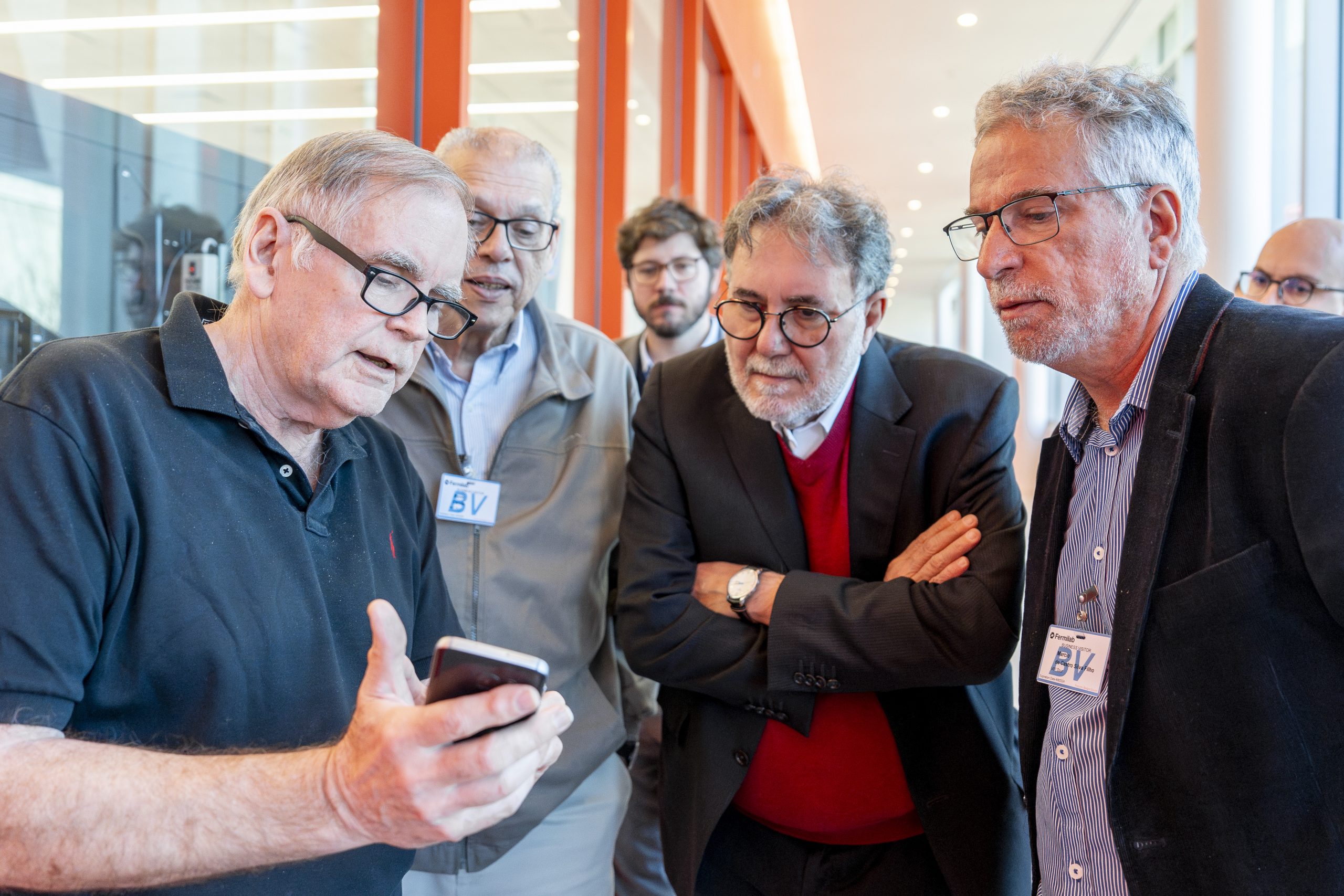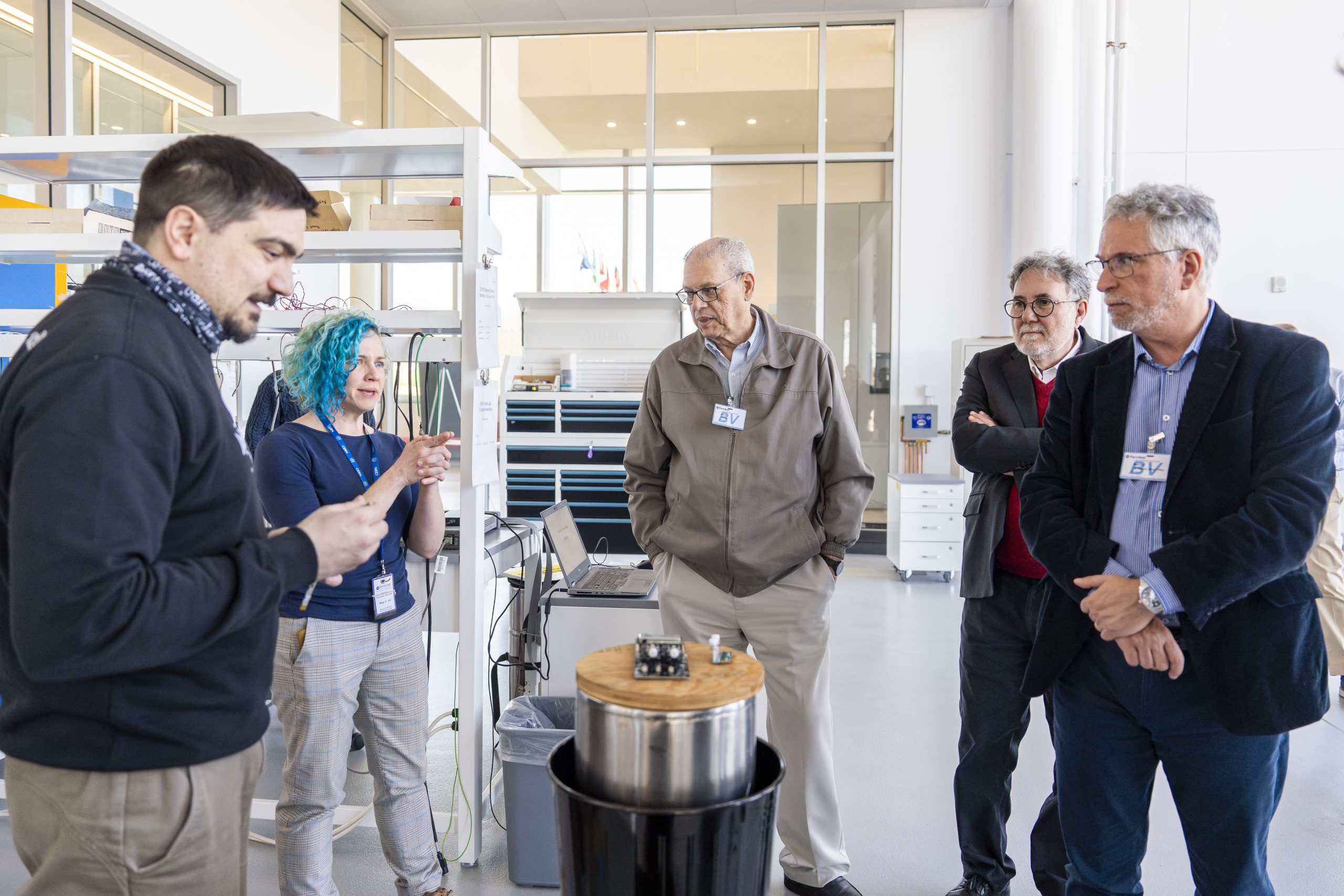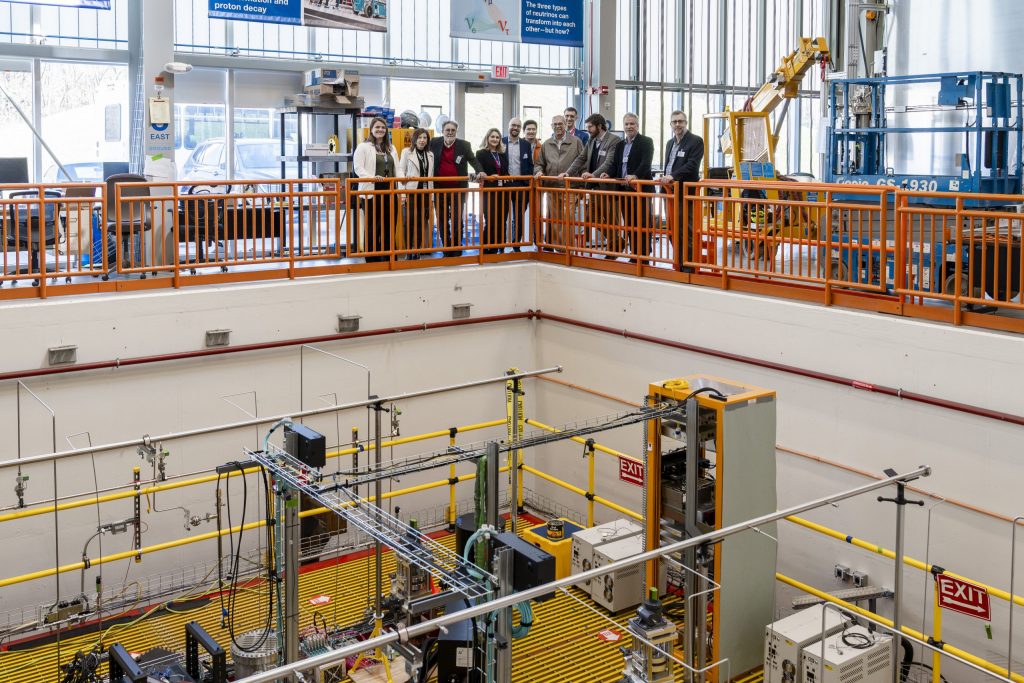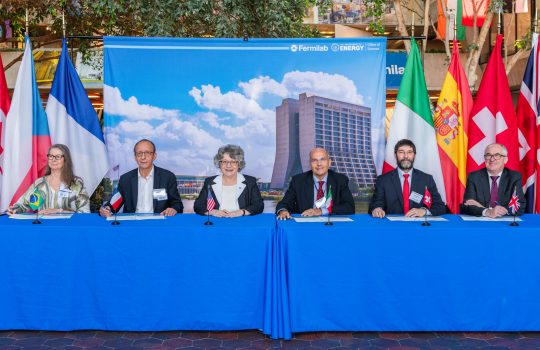Representatives of the São Paulo Research Foundation, including Executive Director Carlos Américo Pacheco, Scientific Director Márcio de Castro Silva Filho and General Coordinator of Humanities and Arts Sylvio Canuto, visited the U.S. Department of Energy’s Fermi National Accelerator Laboratory in April to gain an overview of the lab’s scientific portfolio.
The foundation, known as FAPESP, is a state funding agency in São Paulo, Brazil that supports research projects across various scientific disciplines in higher education and research institutions.
The visit commenced with a discussion led by Fermilab Director Lia Merminga along with representatives from the lab’s science and engineering teams. The focus of the talk was Fermilab’s Long-Baseline Neutrino Facility and the Deep Underground Neutrino Experiment.
Ron Ray, the deputy project director for LBNF/DUNE in the U.S., presented an overview of Fermilab’s flagship experiment. This ambitious project involves directing neutrinos from Fermilab’s campus to detectors situated a mile underground in Lead, South Dakota.

At the Integrated Engineering Research Center, Andrew Lathrop of Fermilab shows an image of the first cosmic ray muon events in a 450 p.s.i. liquid nitrogen cooled 16 Skipper CCD to (left to right) Sylvio Canuto, Carlos Américo Pacheco, and Márcio de Castro Silva Filho of FAPESP. Photo: Dan Svoboda, Fermilab
To gain insight into Fermilab’s neutrino research, the group toured the Integrated Engineering Research Center accompanied by David Montanari, far detector cryogenics manager for LBNF/DUNE U.S. They met with Andrew Lathrop, a senior technical specialist, to view a Skipper CCD, known for its unprecedented sensitivity to weak electrical signals. This technology can help study rare neutrino interactions and potentially provide insights into dark matter.
Jennifer Raaf, Fermilab’s head of the neutrino division, showcased the new lab space in the IERC dedicated to assembling and testing modules produced in Switzerland for the DUNE ND-LAr near detector. This detector is crucial for DUNE’s physics sensitivity.

Left to right: Dante Totani and Jennifer Raaf of Fermilab discuss neutrino detector technologies with Sylvio Canuto, Carlos Américo Pacheco, and Márcio de Castro Silva Filho. Photo: Dan Svoboda, Fermilab
Dante Totani, a postdoctoral researcher from the University of California Santa Barbara, works in this lab space to develop X-Arapuca photodetector cold electronics for DUNE. As neutrinos from Fermilab’s accelerator complex interact with argon nuclei, charged particles are produced. The X-Arapuca detectors collect scintillation light generated during this process to help reconstruct neutrino-argon collisions. This system, developed by Brazilian researchers, is a key feature of the DUNE far detector.
Saravan Chandrasekaran, in-kind contribution coordinator for the Proton Improvement Plan-II accelerator project, led the next segment of the tour. Chandrasekaran highlighted Fermilab’s research and development in accelerator technology — including PIP-II, the particle accelerator designed to provide the world’s most intense beam of neutrinos for the LBNF/DUNE experiment.
Fermilab researchers develop electromagnets and superconducting cavities using materials like niobium-tin, which lose electrical resistance when cooled. Fermilab will contribute 16 of these ultra-strong magnets to the High-Luminosity Large Hadron Collider Upgrade Project at CERN.
Giorgio Apollinari, project manager for the HL-LHC upgrade, and Maria Baldini, a scientist, discussed the project’s scope with the group, emphasizing the magnets’ increased current capacity for creating powerful magnetic fields in the LHC upgrade.
The representatives then learned about Fermilab’s quantum computing research at the Superconducting Quantum Materials and Systems Center, exploring how superconducting cavities, used in accelerators, might serve as quantum computing devices by storing photons briefly. The SQMS Center is one of five National Quantum Information Science Research Centers established by Congress in 2018.

FAPESP representatives stand with members of the Fermilab scientific and engineering staff at the Short Baseline Near Detector. Photo: Dan Svoboda, Fermilab
The tour ended at the Short Baseline Near Detector at Fermilab. Roza Doubnik, a senior cryogenic engineer and technical liaison with Brazil on the LBNF/DUNE project, highlighted SBND’s role as one of Fermilab’s three liquid argon neutrino detectors for the program and its prototyping connection to the LBNF/DUNE cryostats.
Ornella Palamara, co-spokesperson for SBND, detailed that the detector will capture over a million neutrino-argon interactions yearly using Liquid Argon Time Projection Chamber technology and the X-Arapuca photon light system, similar to DUNE.
Fermi National Accelerator Laboratory is supported by the Office of Science of the U.S. Department of Energy. The Office of Science is the single largest supporter of basic research in the physical sciences in the United States and is working to address some of the most pressing challenges of our time. For more information, please visit science.energy.gov.



